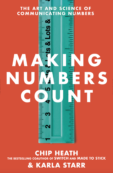The philosopher Peter Singer wrote a moving book called The Life You Can Save, which makes a powerful moral case that all of us should be doing more to help the poorest of the poor.
The video below provides a 3-minute intro to his thinking. (Disclosure: I helped to create this video, along with my friends Jeff Sims and David Hamburger.) You can learn more at his website*.
I desperately want Singer’s idea to stick: We can, and we should, save lives. If you agree, will you help me spread the word about his work?
Here’s a suggested Tweet*: “I’m IN to end poverty. http://bit.ly/ca490h”
* Special thanks to Brains on Fire (and Justin Gammon) for their extraordinary work on the site. Also thanks to Paul Rand for the slogan.





